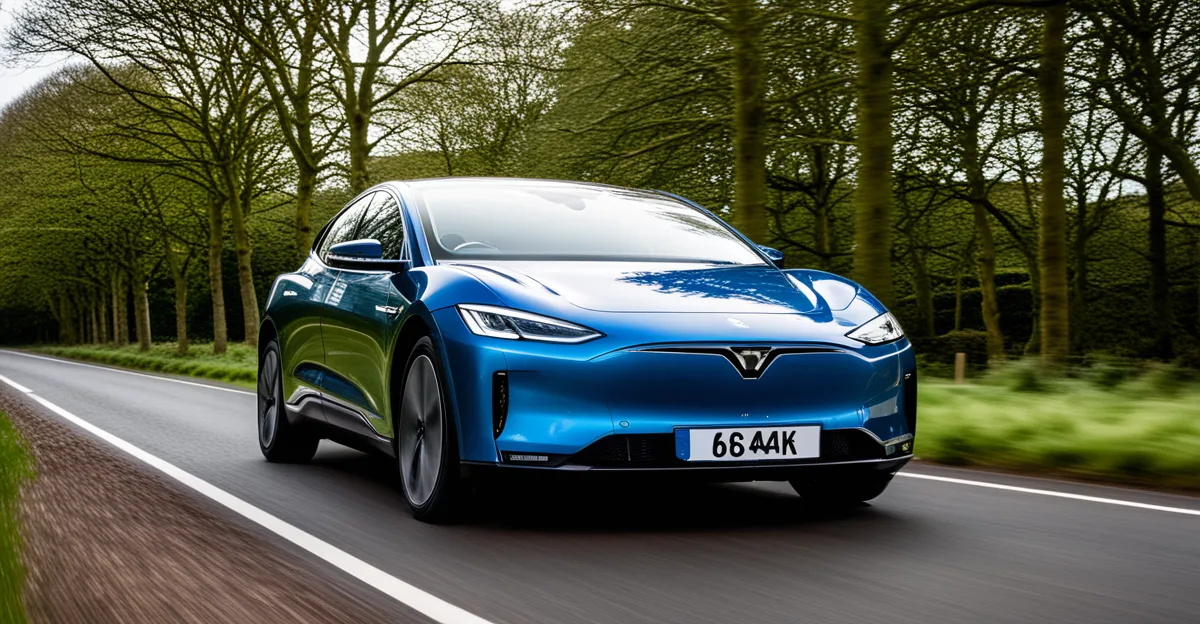Key Drivers Accelerating UK Electric Vehicle Adoption
Understanding the key drivers behind the swift rise of electric vehicle adoption in the UK provides critical insight into the momentum shaping the country’s automotive future. First and foremost, the UK government policies and incentives have played a pivotal role. Initiatives such as grants for EV purchases, tax exemptions, and support for charging infrastructure have substantially reduced the financial barriers, making EVs a more attractive choice for consumers. These incentives reflect a strategic push to meet ambitious environmental targets.
Closely linked to these policies are the environmental regulations and climate goals set by the UK. Stringent emission reduction standards and commitments to phase out petrol and diesel vehicles by 2030 have created a clear regulatory environment that encourages both manufacturers and consumers to shift toward electric mobility solutions. These regulations not only highlight the urgency of addressing climate change but also underline the government’s commitment to cleaner transportation.
Have you seen this : What Innovations Could Transform the UK’s Automotive Industry?
Consumer behavior is shifting rapidly as well. Increasing awareness of environmental issues and the desire for cleaner, more sustainable transport options are driving significant consumer demand for electric vehicles. This trend is further fueled by growing confidence in EV technology, improved vehicle range, and lower operating costs compared to traditional internal combustion engine vehicles. Together, these drivers create a powerful ecosystem propelling the UK toward a predominantly electric automotive future.
Technological Advancements Enabling Rapid Transition
Technological innovations are central to the swift electric vehicle adoption seen in the UK. One of the most significant drivers is the continuous improvement in EV technology, especially in battery design. Advances in battery innovation have led to higher energy density, which translates to extended driving range and quicker charging times. These enhancements effectively reduce range anxiety, a common barrier for potential EV owners. For example, modern lithium-ion batteries now offer substantial mileage on a single charge, often surpassing 200 miles, aligning with everyday commuting needs.
Also read : How are UK automakers responding to consumer demand for sustainable vehicles?
Charging infrastructure is another critical pillar supporting the UK’s rapid transition. The expansion of public and private charging networks ensures that EV owners have convenient access to reliable charging points, both in urban settings and along major travel routes. This broad accessibility is crucial: it not only makes EVs practical for daily use but also encourages more people to consider making the switch from petrol or diesel vehicles. Investment has focused on fast-charging stations which can replenish battery life significantly faster than earlier models.
Furthermore, continuous innovations are improving the affordability and accessibility of EVs. Economies of scale, combined with technological breakthroughs in battery production and vehicle design, have gradually lowered costs. Features like regenerative braking, more efficient electric drivetrains, and smart charging systems also enhance performance and usability. Together, these advancements create an ecosystem where EV technology meets the practical needs and expectations of a wide range of consumers, reinforcing the momentum behind the UK automotive industry’s electric future.
Industry Investments and Strategic Shifts in the UK
The UK automotive industry is experiencing a transformative wave driven by significant automotive investments focused on electric vehicle adoption. Established manufacturers are committing substantial resources to local EV production, upgrading facilities to support the assembly and development of electric models. For instance, several leading UK car manufacturing plants have pivoted from traditional combustion engines to fully electric drivetrains, signalling a fundamental strategic shift towards electrification.
Beyond manufacturing, companies are revamping their fleets to embrace electric vehicles, enhancing sustainability credentials while catalysing broader market demand. This shift is evident across corporate and public transport sectors, where the transition to electric fleets supports environmental goals and operational efficiencies.
Moreover, the UK is witnessing a surge in innovative EV startups and collaborative ventures. Partnerships between new entrants and established firms bolster research, development, and deployment of cutting-edge electric vehicle technologies. These synergies expedite adoption curves and foster competitive advantages within the evolving market landscape.
In summary, these industry investments and strategic shifts in UK car manufacturing indicate a determined commitment to electrification, which plays a critical role in sustaining the momentum behind nationwide electric vehicle adoption.
UK EV Adoption in Context: Global Comparisons and Trends
Understanding how the UK’s EV adoption rates compare internationally reveals both progress and areas for growth. The UK stands out among European nations for its robust uptake of electric vehicles, largely due to aggressive government incentives and clear climate policies. For example, compared to countries like Germany and France, the UK has achieved higher annual sales percentages of EVs, driven by early policy implementation and substantial public and private sector support. This momentum situates the UK as a leader, yet there remains a gap when pitted against Northern European frontrunners such as Norway, where EV adoption rates surpass 70% of new car sales.
Examining infrastructure and policy reveals further context. The UK has expanded its charging infrastructure considerably, yet in terms of density and access, it still trails countries like the Netherlands and Norway. Both nations benefit from comprehensive networks of fast-charging stations integrated with national policy frameworks that aggressively promote electric mobility. These frameworks include mandates and incentives geared toward seamless consumer experiences, such as ease of payment and charger interoperability. The UK’s charge point coverage is steadily improving, but scaling this to meet future demand remains a key challenge.
The UK automotive industry is actively observing international trends to enhance its own electric vehicle adoption strategies. Learning from successes abroad, such as extensive public-private partnerships in Scandinavian countries and integration of renewable energy sources for EV charging, offers roadmap insights. Additionally, the UK’s experience with market incentives and infrastructure development informs continuous policy refinement. Applying these lessons helps accelerate the country’s transition to electric mobility while maintaining competitive edge within the broader European market.
In summary, the UK’s position in the global EV landscape is strong yet evolving. Continued collaboration between policymakers, industry, and consumers will be essential in aligning the UK’s electric vehicle adoption rates and infrastructure with top global performers.







